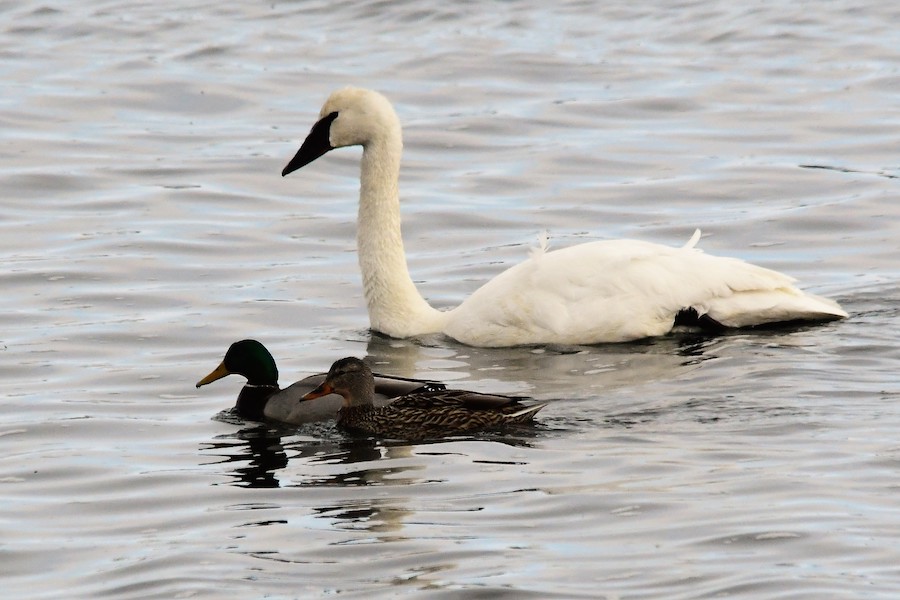Two pair of Hooded mergansers played tag near the Fun Farm Bridge east of St. Anthony while a small flock of Lesser scaup and dozens of Golden-eyes dove looking for food. Some Trumpeter swans used their long necks to search for aquatic plants to eat on the Henrys Fork of the Snake River and were stirring up food for the smaller waterfowl.
I was making a dry run for my involvement in the 23rd Annual Great Backyard Bird Count (GBBC), my favorite winter bird survey of the year. It will happen this year from Friday, Feb. 14 through Monday, Feb. 17 over the President’s Holiday weekend. The thing I like about the GBBC is that all you have to do is observe an area for 15 minutes, identify the birds seen, record how many of each species and then report it to www.birdcount.org or www.audubon.org.

Those two websites have a lot of materials and activities listed for individuals, families and even classrooms to download for interested groups. The GBBC will also feature a photo contest for pictures taken during the count.
“This count is so fun because anyone can take part – whether you are an expert, novice or feeder watcher,” writes Chad Wilsey, Interim Chief Scientist for the GBBC. “I enjoy discovering the birds that occur in my own backyard and on my block and then comparing with others. Get involved and see how your favorite spot stacks up.”

This year’s bird count is going to be very interesting because of all the snow and storms we have had. The snow depth has covered most of the natural food for many birds, so people that are putting out feeders are getting a lot of birds visiting them. Two of the most interesting birds have been the number of Blue jays (usually rare for the Upper Snake River Valley) and the Steller’s jay.
Steller’s jays are native to this area but usually spend most of their time in mature evergreen forests like Island Park and the Moody areas. This year they have come down to populated areas and are visiting feeders regularly.

A daily inventory of my feeders in my backyard is one of my favorite birding activities. For the last two weeks, I have had a Sharp-shinned hawk harvesting a House finch, Goldfinch or House sparrow daily near my feeders. During the bird count, I will watch them uninterrupted for about half an hour and record the species and number of each to report. I will also do at least one 30-minute observation at the Fun Farm Bridge for the waterfowl in that area. If the weather permits, I will also visit the farmland around Howe to get a count of the raptors there.
If you are interested in combining a cross country ski trip among Trumpeter swans, Deer Parks Wildlife Management west of the Menan Buttes has about 1000 visiting there. Another destination could be to Camas National Wildlife Refuge to watch the Bald eagles come to roost in the large cottonwood trees north of the headquarters.

Snow will be a limiting factor in many areas so a visit to a local cemetery with mature evergreens are always a good spot for woodpeckers, owls, chickadees, waxwings and nuthatches. If you find a bunch of chickadees, study them very carefully as the most common ones are the Black-capped but we also have some beautiful Mountain chickadees this winter. Another common bird this year often not seen in the winter is the Evening grosbeak.
In taking part in the GBBC, it is important that you try to identify and count each bird that you see including to lowly magpies, House sparrows and starlings.
Hopefully we will have some good days during the count and many of us will get out to enjoy this activity. Good luck and get outside.
"bird" - Google News
February 09, 2020 at 07:19AM
https://ift.tt/2vkBQtf
Time for the 2020 backyard bird count - East Idaho News
"bird" - Google News
https://ift.tt/2s1zYEq
Shoes Man Tutorial
Pos News Update
Meme Update
Korean Entertainment News
Japan News Update
No comments:
Post a Comment